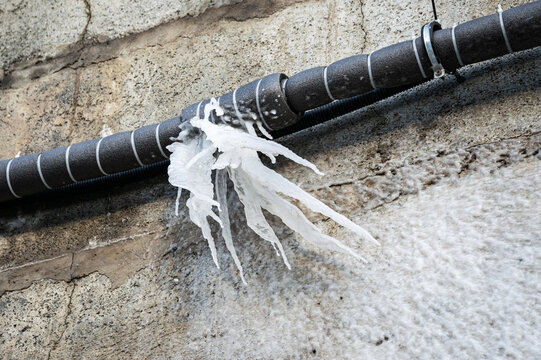Avoiding Frozen Plumbing in Winter: Professional Strategies
Avoiding Frozen Plumbing in Winter: Professional Strategies
Blog Article
Each person may have their personal theory about How to Prevent Your Pipes From Freezing.

Winter can ruin your pipes, especially by freezing pipelines. Here's exactly how to stop it from taking place and what to do if it does.
Intro
As temperatures decrease, the danger of icy pipelines increases, potentially causing pricey repairs and water damages. Understanding exactly how to prevent frozen pipes is critical for homeowners in chilly climates.
Comprehending Icy Pipelines
What triggers pipelines to freeze?
Pipes freeze when subjected to temperature levels listed below 32 ° F (0 ° C) for prolonged durations. As water inside the pipelines freezes, it expands, putting pressure on the pipe walls and possibly creating them to break.
Dangers and damages
Frozen pipelines can bring about water supply disturbances, residential property damage, and expensive repairs. Ruptured pipes can flooding homes and trigger extensive structural damages.
Signs of Frozen Pipes
Identifying icy pipelines early can stop them from rupturing.
Just how to recognize icy pipes
Search for decreased water circulation from taps, uncommon odors or sounds from pipelines, and visible frost on revealed pipes.
Prevention Tips
Shielding at risk pipes
Wrap pipes in insulation sleeves or utilize heat tape to shield them from freezing temperature levels. Focus on pipelines in unheated or external locations of the home.
Home heating techniques
Maintain indoor spaces sufficiently warmed, especially areas with pipes. Open closet doors to permit cozy air to distribute around pipelines under sinks.
Safeguarding Exterior Pipes
Garden pipes and outdoor faucets
Detach and drain pipes garden pipes prior to winter months. Set up frost-proof faucets or cover outside taps with insulated caps.
What to Do If Your Pipelines Freeze
Immediate actions to take
If you presume icy pipes, maintain faucets open up to alleviate pressure as the ice melts. Utilize a hairdryer or towels taken in warm water to thaw pipes slowly.
Long-Term Solutions
Architectural modifications
Consider rerouting pipes away from outside wall surfaces or unheated areas. Add additional insulation to attic rooms, cellars, and crawl spaces.
Updating insulation
Purchase premium insulation for pipelines, attic rooms, and walls. Appropriate insulation aids keep regular temperature levels and minimizes the threat of icy pipelines.
Final thought
Protecting against icy pipes requires aggressive procedures and quick feedbacks. By comprehending the reasons, indications, and safety nets, home owners can secure their pipes throughout cold weather.
5 Ways to Prevent Frozen Pipes
Drain Outdoor Faucets and Disconnect Hoses
First, close the shut-off valve that controls the flow of water in the pipe to your outdoor faucet. Then, head outside to disconnect and drain your hose and open the outdoor faucet to allow the water to completely drain out of the line. Turn off the faucet when done. Finally, head back to the shut-off valve and drain the remaining water inside the pipe into a bucket or container. Additionally, if you have a home irrigation system, you should consider hiring an expert to clear the system of water each year.
Insulate Pipes
One of the best and most cost-effective methods for preventing frozen water pipes is to wrap your pipes with insulation. This is especially important for areas in your home that aren’t exposed to heat, such as an attic. We suggest using foam sleeves, which can typically be found at your local hardware store.
Keep Heat Running at 65
Your pipes are located inside your walls, and the temperature there is much colder than the rest of the house. To prevent your pipes from freezing, The Insurance Information Institute suggests that you keep your home heated to at least 65 degrees, even when traveling. You may want to invest in smart devices that can keep an eye on the temperature in your home while you’re away.
Leave Water Dripping
Moving water — even a small trickle — can prevent ice from forming inside your pipes. When freezing temps are imminent, start a drip of water from all faucets that serve exposed pipes. Leaving a few faucets running will also help relieve pressure inside the pipes and help prevent a rupture if the water inside freezes.
Open Cupboard Doors
Warm your kitchen and bathroom pipes by opening cupboards and vanities. You should also leave your interior doors ajar to help warm air circulate evenly throughout your home.

We were shown that write-up on 6 Ways to Prevent Frozen Pipes from a friend on another web property. Do you know about anybody else who is excited about Winter Plumbing Precautions: Preventing Frozen Pipes? Why not share it. Thank you so much for going through it.
Book Instantly Report this page